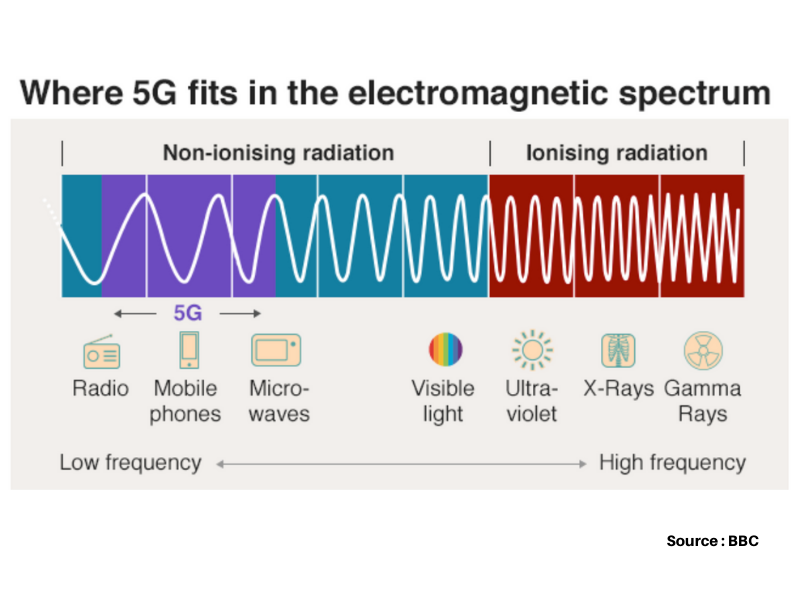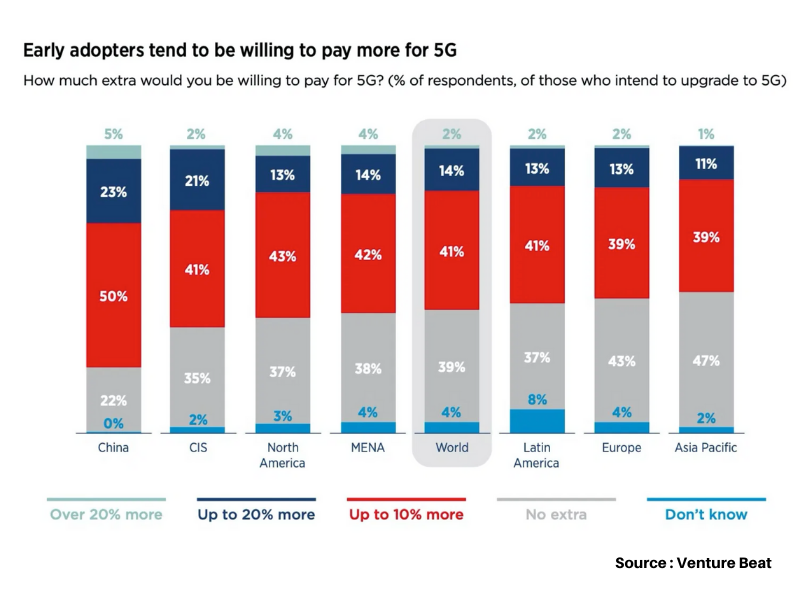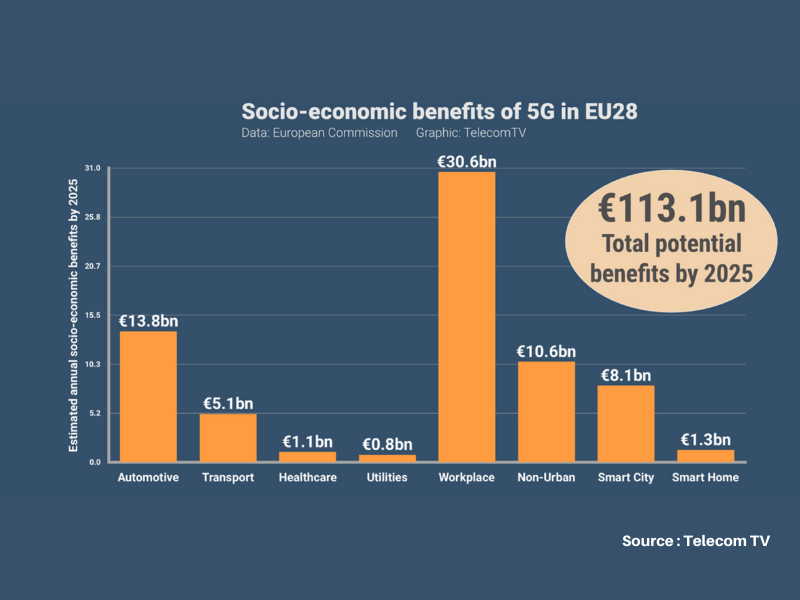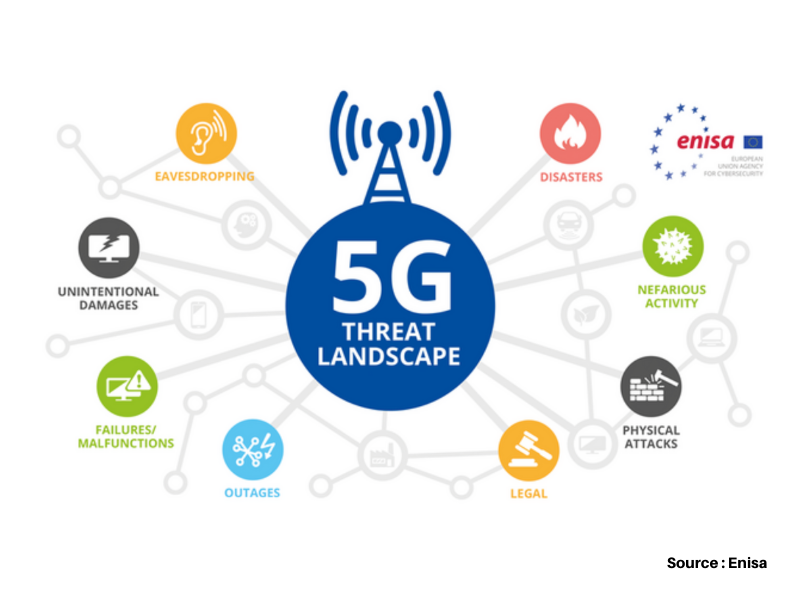This article is about 5G
Biggest Challenges Hindering 5G Adoption
By NIIT Editorial
Published on 02/01/2021
6 Minutes
The pandemic struck at the core of global business dismantling conventions and bringing out their follies. As most of us continue to work from home and collaborate virtually, astute decision-makers have realized that internet connectivity needs to improve. While the installation of 5G infrastructure is at the behest of the carriers, customers including the likes of IT managers working from home are piquing the 5G demand. But things are less simple for the mobile operators who are facing the following challenges to spread the reach of 5G networks.
Availing Frequency Bands
4G LTE networks operate at the accessible 6Ghz but 5G requires frequency bands that stretch up to 300 GHz or colloquially known as millimeter wave (mmWave) spectrum. A higher frequency frees up signal bandwidth and therefore offers low-latency due to which 5G speeds will be, at least theoretically, 100 times faster than 4G.
Spectrums have to be bid for, quite naturally the costs of which are exceptionally high. Take the case of the USA for instance wherein millimetre wave spectrum recorded a single day spectrum sale worth $4.47 billion.

Deployment
You should go through our detailed guide on key essentials about 5G in case you are new to this technology and it interests you. We’ve discussed here in detail how exactly would 5G towers transmit heavyweight data. The industry needs small cells that would enable 5G network clusters to operate.
But since the coverage range for these is low, operators would need more of them spread over shorter distances. In addition to that Massive MIMO towers are needed to bridge the clusters. Since the prime focus for 5G installation would commence in cities, rural dwellings would rely on 4G LTE bandwidths for the first few years. In other words, due to lack of usable cell sites and reach, spreading to the peripheries of a country with 5G would be a challenge.

Cost
To launch something new costs money. From spectrum acquisition to hardware installation and setting up online defences against cyber threats, massive investments would have to be made for massive gains. By 2023, the cumulative global spending on 5G is expected to reach $88 billion. This cost, and more, would be recouped by the mobile operators from their customers who would have to pay higher sums for a 5G connection.
As of writing, 5G smartphones are making inroads in the market. So too are semi-autonomous vehicles that are capable of handling on-road maneuvers efficiently. Yet, it would be a good time until we see pure on-road automation.

Compliance & Regulation
The government will take the lead as an instigator, not mediator, in formulating regulations to channel the efforts of associated 5G businesses through legitimate means. Public concern around mmWave radiation and inadvertent monopolies being created by established hardware and networking giants will take mainstage with federal jurisdiction.
We can see regulatory benchmarks being taken seriously around the world. Operators in Canada have committed to running value chains within the prescribed limits set by Innovation, Science, and Economic Development Canada (ISED), the Canadian Radio-television, and Telecommunications Commission (CRTC) along with Health Canada.
Sources claim that the US’s Federal Communications Commission (FCC) may enact certain provisions to encourage the participation of SMBs in 5G. The EU has gone as far as recommending R&D standards for the 5G technology, speeding up the overdue spectrum auctions postponed due to the pandemic.

Security
The current digital system has worked to amplify cyber vulnerabilities for enterprises. Security breaches are all too common, with the latest hacks impacting many Fortune500 bigwigs in America. 5G won’t be any different, due to which the need to secure the data premises and everything critical along with it is dire. 5G technology is covered under the Authentication and Key Agreement (AKA), a credible authority that establishes mutual trust among networks.
Yet, this won’t automatically guarantee protection for 5G. For the time being, 5G connections in any cluster are traceable. With the actual severity of cyber-attacks yet to be determined, experts believe the possibility of DDoS and SIM card attacks will be the highest in the initial years.

Conclusion
Technology will always strive forward, eliminating the utopian scenario where IT experts know-it-all and can slouch back on a couch. The best we can, and should do, is to acquire maximum information for a streamlined business throughput. The Nokia Bell Labs End-to-End 5G Certification Programme is designed to train professionals to deal with challenging 5G scenarios as leaders. 5G will be an industry the true depths of which are yet to be explored, and you can be the first to do so.
5G Certification Programme by Nokia Bell Labs and NIIT
Be a Pioneer and lead the 5G Revolution. Join the 5G Foundation Certification Programme offered by Nokia Bell Labs and NIIT, and guide businesses into the new world of next generation wireless technology
Nokia Bell Labs’ Global Certification
State-of-the-art Curriculum


 Sign In
Sign In































































































































































































































































































































































































